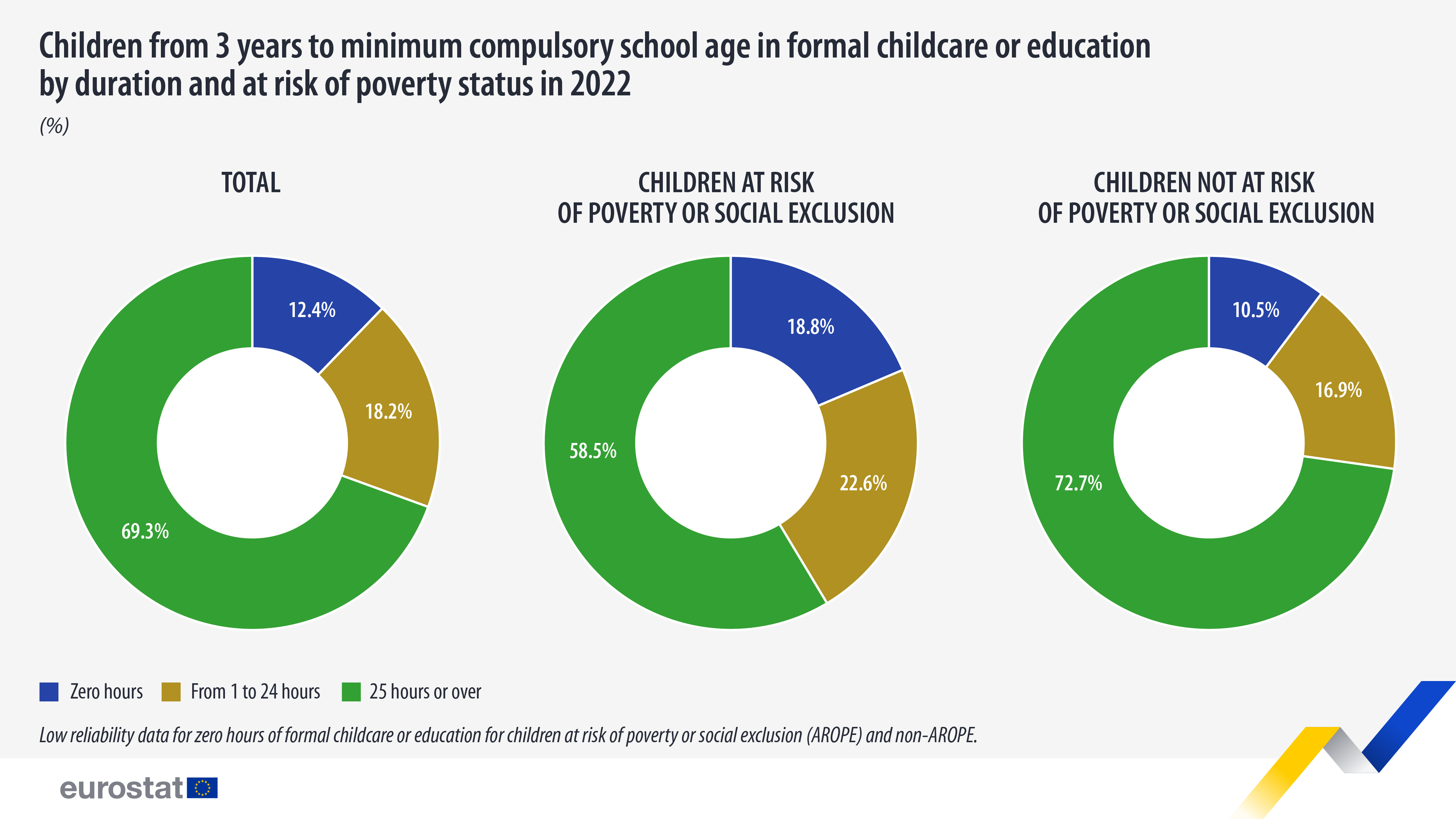New indicators on childcare participation and intensity

In 2022, 69.3% of children aged from 3 years to the minimum compulsory school age in the EU participated in formal childcare or education for at least 25 hours per week. Within this age group, 12.4% of children were not involved in formal childcare (zero hours), while 18.2% participated in formal childcare for up to 24 hours per week.
Children at risk of poverty and social exclusion (AROPE) of the same age group showed lower rates of participation in formal childcare or education. Specifically, 58.5% participated in formal childcare or education for at least 25 hours per week, as opposed to 72.7% of children not at risk. Moreover, 18.8% of the children at risk did not participate in formal childcare (10.5% of non-AROPE children) and 22.6% participated in formal childcare up to 24 hours a week (16.9% of non-AROPE children).
This data is available through a new indicator for measuring ‘Children in formal childcare or education by age group and duration’ published by Eurostat today.
Source dataset: ilc_caindform25
For more information
- Statistics Explained article on living conditions in Europe - childcare arrangements
- Thematic section on income and living conditions
- Database on income and living conditions
Methodological notes
- Following the Council Recommendation of 8 December 2022 on early childhood education and care: the Barcelona Targets for 2030 (2022/C 484/01), Eurostat has defined a new indicator for measuring ‘Children in formal childcare or education by age group and duration’, setting the threshold for the number of hours in formal childcare or education at 25 hours per week, and breaking the indicator down by the at risk of poverty or social exclusion status (ilc_caindform25) and by income quintile (ilc_caindform25q). In addition, together with the three age groups already available in the former indicator (ilc_caindformal), an additional age group has been added for children aged 1 or 2 years old. Furthermore, the variances and confidence intervals for each particular breakdown are available in a dedicated CIRCBC folder.
- Methodological information on at risk of poverty or social exclusion can be found here.
If you have any queries, please visit our contact us page.

